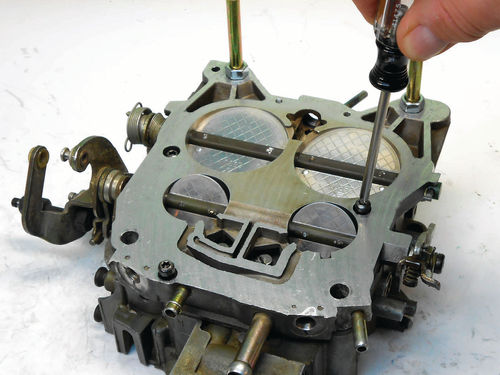As already stated they do not. Chevy 305 baseplates have idle air bypass installed, the Olds 307 baseplates do not. Also the Olds 307 baseplates have additional timed vacuum slots right above the throttle plates that Chevy 305 baseplates lack.
Idle bypass air is what the name implies. Its a calibrated amount of air that bypasses the throttle plates at idle. Its purpose is to allow the throttle plate opening angle to be reduced at idle to prevent the dreaded main nozzle drip. Thus the presence or lack of idle bypass air has a large effect on the idle system calibration. As Cliff Ruggles states in his book about Qjets, the idle air bypass is instrumental in controlling primary throttle angle at idle speed even with sufficient idle fuel. Not all Qjets used idle air bypass but most applications did, especially HO applications.
Thinking about it, it makes sense that Olds 307s didn't use idle bypass air since the 307's low flow swirl port heads and low compression probably limited idle airflow to the point that bypass wasn't need. Meanwhile, Chevy 305s used in G bodies never had swirl ports and often had higher compression than 307s. In this case the 305s needed bypass air to meet their higher flow demands.
I highly suggest to the OP to purchase and study some books about Qjets such as the Doug Roe and Cliff Ruggles books before proceding further with his car. Hopefully I haven't too aggravating but this is something that shouldvnot be overlooked.
U







